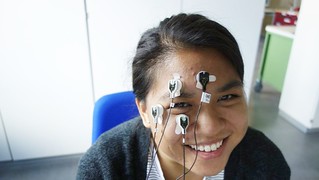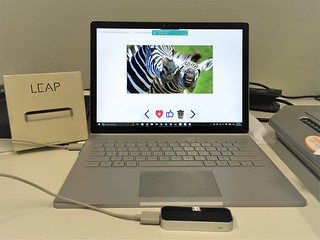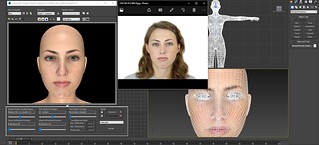 In its third and final year, the UNH International Research Experiences for Students (IRES) program has selected eight students to conduct research in the HCI Lab at the University of Stuttgart, under the supervision of my colleague Albrecht Schmidt. The UNH IRES program is funded by the National Science Foundation, Office of International and Integrative Activities, and we are grateful for their support. The eight students were each assigned to a group within the HCI Lab and participated in the research activities of that group.
In its third and final year, the UNH International Research Experiences for Students (IRES) program has selected eight students to conduct research in the HCI Lab at the University of Stuttgart, under the supervision of my colleague Albrecht Schmidt. The UNH IRES program is funded by the National Science Foundation, Office of International and Integrative Activities, and we are grateful for their support. The eight students were each assigned to a group within the HCI Lab and participated in the research activities of that group.
I asked each of the students to write a one-paragraph report on their summer experience in Stuttgart, focusing on their research, and on their cultural experience. This is the second installment of these brief reports, where we look at some of the research conducted by the students. (You can see the first installment here.)
Natalie Warren worked EEG recording devices:
Learning about EEG during the past two months under the supervision of Valentin and Jakob has been very rewarding. I’ve learned a huge amount about signal processing, experiment design, MATLAB, coding stimulus presentations, and brain activity, not to mention using EEG recording systems! We also got to put our knowledge to use early in the program by measuring electrical activity generated by the eye movement of some of our colleagues (like Anna, pictured here).
Whitney Fahnbulleh worked on augmenting human memory:
This summer I have been developing a photo gallery application for the “recall” project, a project that explores ways to augment human memory. I have been implementing various ways users can interact with the gallery through touch gestures, mid-air gestures, speech recognition, and keyboard input. My end goal for this project is to flesh out the user interface design and run user studies on the application. I have learned so much about computer vision this summer, and I look forward to working on future projects for recall.
Aditi Joshi worked on visualizing uncertainty:
For the past two months, I have been working on designing and implementing a study investigating uncertainty visualizations. In the future, the amount of uncertain information that we will have access to will increase and often they will have conflicting information. With this study, we are trying to understand how people aggregate uncertainty information so we can implement these techniques in future technologies. In this picture Anna is participating in the study and providing us with some great data.
Donovan O.A. Toure how the realism of virtual faces affects the human observer:
This summer, I worked on the perception of computer generated/virtual faces within the Uncanny Valley by analyzing brain waves as an individual is presented with virtual faces with varying levels of detail. In addition to learning about EEG, digital signal processing, and the uncanny valley, I worked on stimulus creation–including 3D modelling–to help carry out the experiment design.


